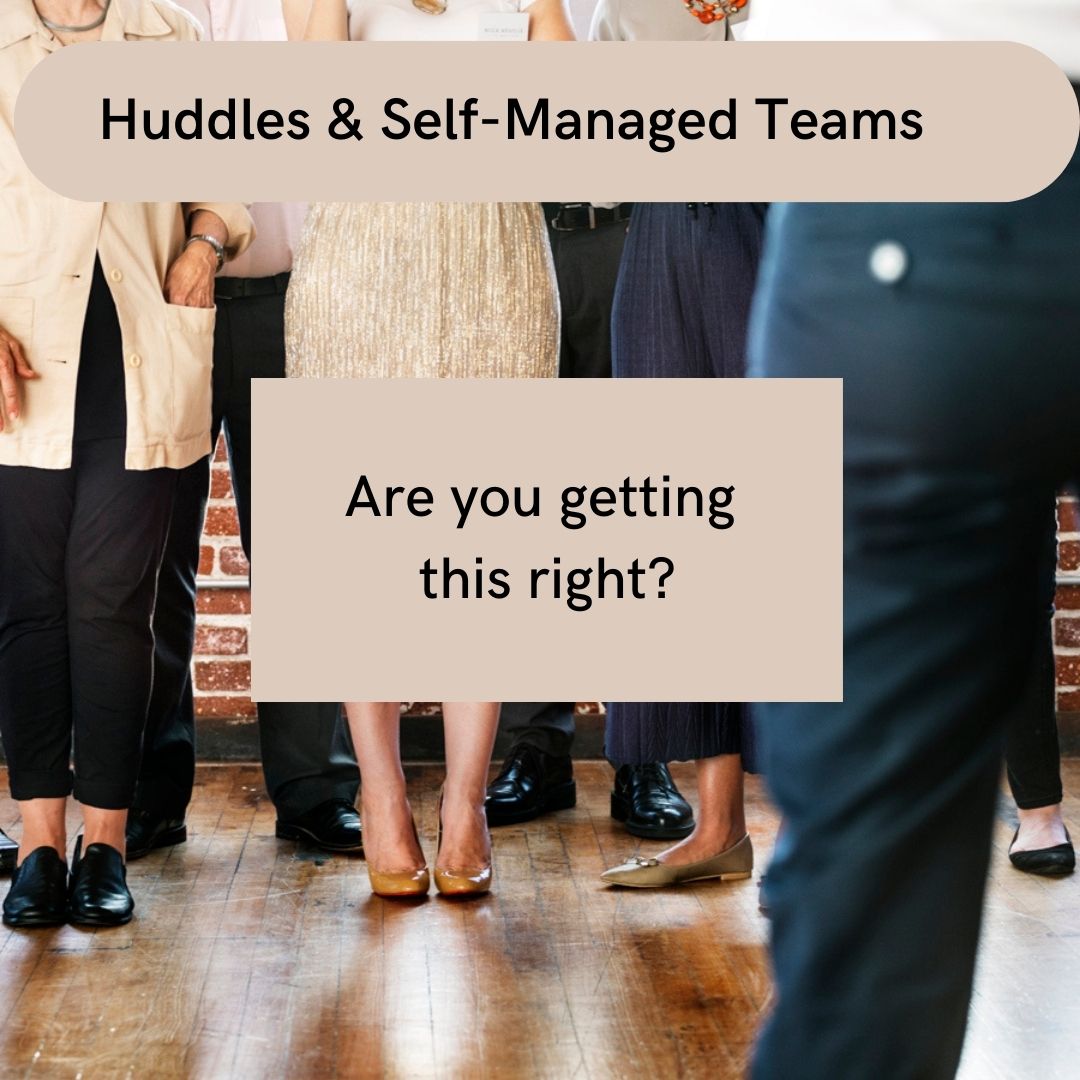A few years ago, I had the bright idea to increase the number of huddles per week. Although done with the best of intentions, it was not the right choice for us. What wasn’t working? And how might our learning aid you?
Our team holds huddles weekly. What’s a huddle? It’s a short team meeting to share wins, progress, and when help is needed. Other names for huddles include stand-up meetings and scrum meetings. Whether taking a traditional work-delivery approach or a more modern holistic approach, the aim: alignment with and momentum toward objectives.
A quick conversation about huddles
I had a chance to revisit this learning about huddles during a podcast interview late last year. I’m sharing that 1 min clip with you, below:
In the clip I am speaking with a fellow business and leadership coach and host of the Scaling Up podcast, Bill Gallagher. A daily huddle is part of a business system that has been proven to work. I bring up a new thought about huddles, borne from my own leadership experience, of what huddles can be like (and what they should not be like) when individuals on your team are fully empowered and trusted to manage their own work.
“If you’ve been successful in creating a culture where people are self-managing, it’s possible that they don’t get that the huddle is truly a place to collaborate and it is not a hammer of reporting that you have something done that you weren’t expected to have done yet.”
For us, less frequent meetings and a more personal tone to huddles is what worked best.
Huddles aren’t only for checking-in on the progress of work
When you orchestrate a culture for the state of aligned momentum, individuals in your team are empowered to self-manage.
Huddles that are too focused on management of work, without regard to the whole person, just don’t go over well in a self-managed workplace.
Huddles that are more about connection, and being of service to each other for well-being and not only work product, are more likely to achieve the aim of these meetings.
Stay curious
If people are resisting your huddles, ask yourself—and them—why. Do so, of course, without judgment or repercussion.
Encourage feedback and input
Sometimes you must try different approaches to see what best fits what you aim to achieve. For my team, the initial feedback indicated the meetings weren’t desired at all. With ongoing 1-1 conversations, though, I found that there was a disconnect from what some on the team thought was required of them for the meeting and what I was intending.
Different, not done.
Once that disconnect was cleared up, our meetings continued but just with less frequency. Our huddles are a natural mix of personal and work wins, progress, connection, and support. Stopping the meetings altogether would have been the wrong result. For us, just changing up the pace and making the place safe to be holistic was what made our huddles work.

Your best next step
For your “Your 1 Best Next Step,” revisit the meetings you hold, especially huddles if you hold those. What questions, feedback, and input would make these meetings work even better for you and your teams?

